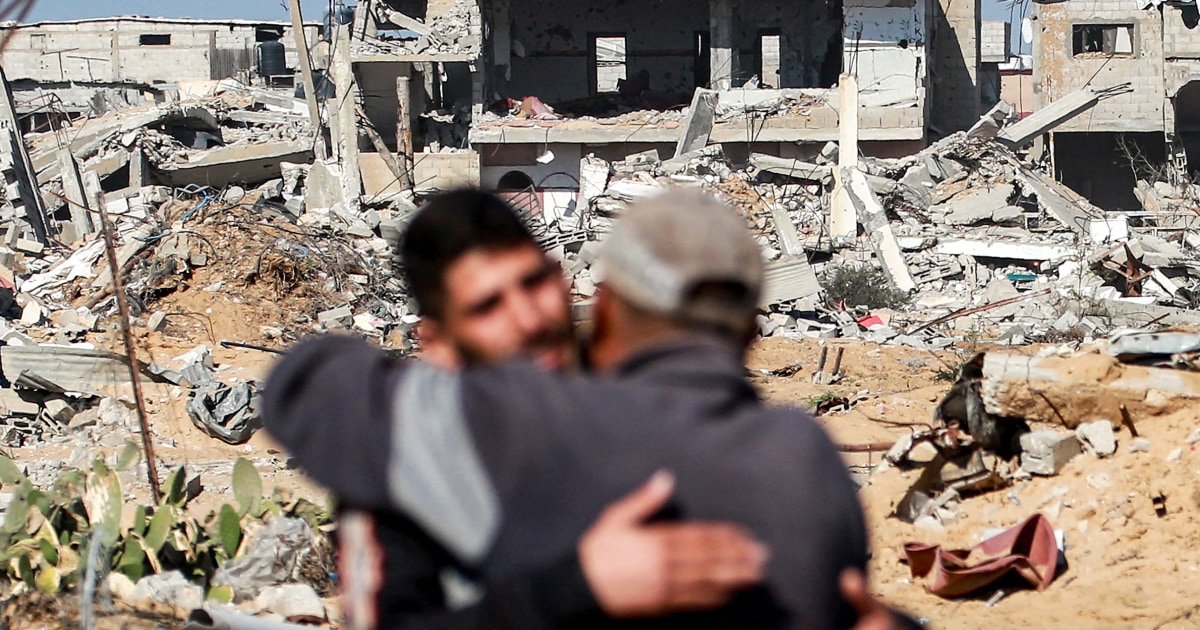Humanitarian Aid Surge: Analyzing the Ceasefire Impact in Gaza
As the ceasefire in Gaza extends into its fourth day, a significant humanitarian aid surge is underway, marking a crucial turning point for the region. This respite from conflict has enabled aid organizations to mobilize, bringing much-needed relief to the devastated population. However, the road to recovery is fraught with challenges and complexities that require careful navigation.
The Immediate Effects of the Ceasefire
The ceasefire has ushered in a wave of hope, allowing humanitarian groups to deliver supplies that were previously stalled due to hostilities. Access to affected areas has improved, and the influx of aid is being felt across Gaza. Food, medical supplies, and clean water are just a few of the essentials that are now reaching those in dire need.
According to reports from organizations like the United Nations and Red Cross, the initial days of the ceasefire saw:
- Delivery of food and water: Over 100 trucks carrying essential goods entered Gaza, providing relief to thousands.
- Medical assistance: Hospitals, which were overwhelmed, are now receiving supplies and support, allowing them to treat the injured and sick more effectively.
- Psychosocial support: Aid organizations have begun implementing programs to address the mental health impact of the conflict, a critical aspect of recovery.
Challenges Faced by Aid Organizations
Despite the positive developments, the delivery of humanitarian aid is not without its challenges. Aid organizations face multiple hurdles that complicate their efforts:
- Security concerns: While the ceasefire holds, the stability of the situation is precarious. Aid workers must remain vigilant, as the threat of renewed violence looms.
- Logistical obstacles: The destruction of infrastructure during the conflict has complicated transportation routes, making it difficult to reach remote areas.
- Resource limitations: The demand for aid far exceeds the available resources. Organizations are racing against time to meet the needs of the population.
Moreover, the ongoing blockade has led to a scarcity of materials needed for rebuilding efforts, making it difficult for locals to restore their homes and communities.
Success Stories Amid the Struggles
Amid these challenges, there are numerous success stories that highlight the resilience of both the aid organizations and the people of Gaza. Many local and international groups have stepped up, showcasing innovative methods to deliver aid effectively:
- Community Engagement: Organizations have started working closely with local communities to identify their specific needs, ensuring that aid is relevant and appropriately targeted.
- Mobile Clinics: To address healthcare needs swiftly, mobile clinics have been deployed to reach those in isolated areas, providing immediate medical assistance.
- Education Initiatives: Efforts are being made to provide educational resources for children who have been affected by the conflict, emphasizing the importance of mental health and continuity of learning.
These initiatives not only offer immediate relief but also lay the groundwork for long-term recovery and resilience.
International Response and Support
The international community has also rallied support for Gaza, recognizing the importance of humanitarian aid during this critical period. Countries and organizations have pledged financial support and resources to assist in relief efforts. Notably:
- Increased Funding: Various governments have announced additional funding for humanitarian efforts, acknowledging the urgent need for resources.
- Partnerships: Collaborative efforts between NGOs and governments have resulted in more streamlined aid delivery, maximizing the impact of support.
- Advocacy for Long-term Solutions: Global leaders are advocating for sustained attention to the humanitarian crisis, emphasizing the need for political solutions to prevent future conflicts.
Looking Ahead: The Future of Aid in Gaza
As the ceasefire continues, the focus must shift from immediate relief to sustainable recovery. While the humanitarian aid surge has provided crucial support, it is essential to consider how this aid can lead to long-lasting improvements in the lives of Gazans. Key areas of focus should include:
- Rebuilding Infrastructure: Investment in rebuilding schools, hospitals, and homes is vital for the community’s future.
- Economic Development: Encouraging local economies through job creation and training programs can foster resilience and self-sufficiency.
- Continued Monitoring: Ongoing assessment of the situation is necessary to adapt aid strategies to evolving needs.
By addressing these areas, aid organizations can help pave the way for a more stable and prosperous future for Gaza.
Conclusion
The ongoing humanitarian aid surge in Gaza during the ceasefire is a testament to the resilience of both the aid organizations and the communities they serve. While challenges remain, the successes achieved thus far are encouraging. The international community’s support and the commitment of local organizations play a crucial role in shaping the recovery landscape. As efforts continue, it is imperative to remain hopeful and dedicated to building a better future for the people of Gaza. Together, through sustained humanitarian efforts, recovery is not just a possibility; it is an impending reality.
See more CNN Headline


